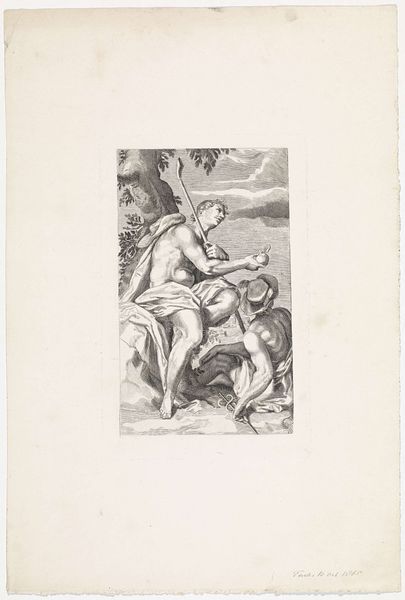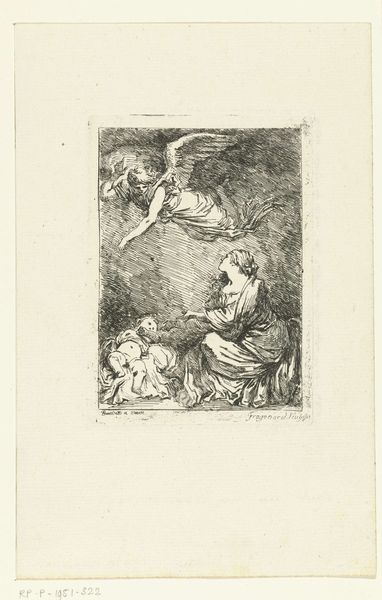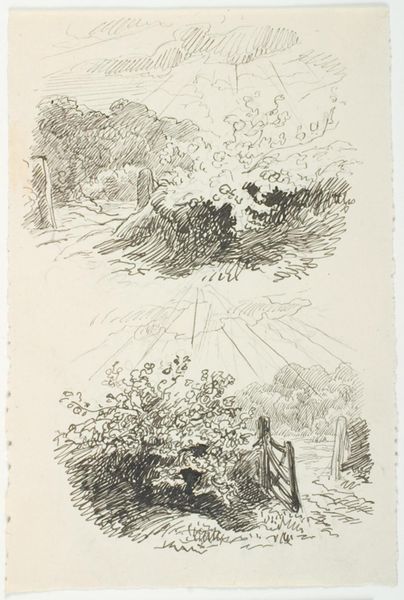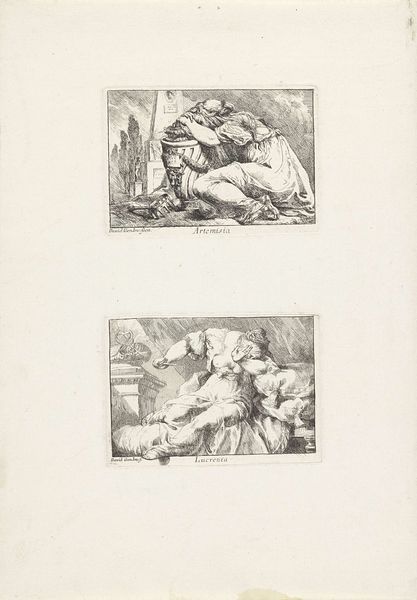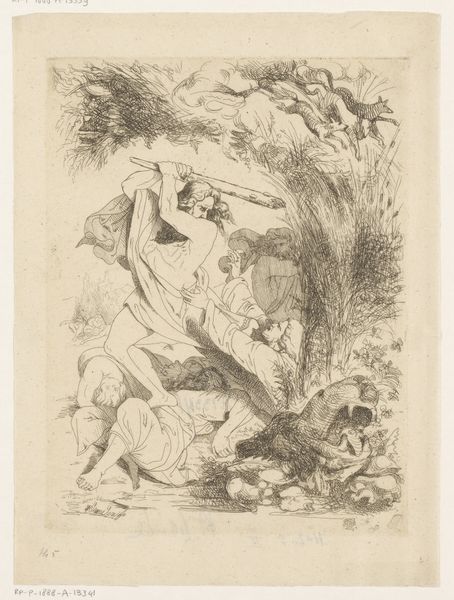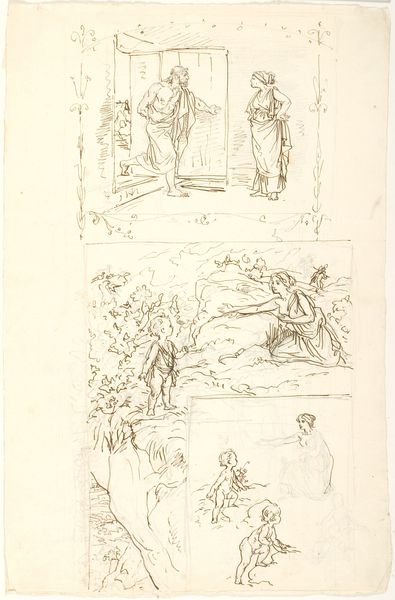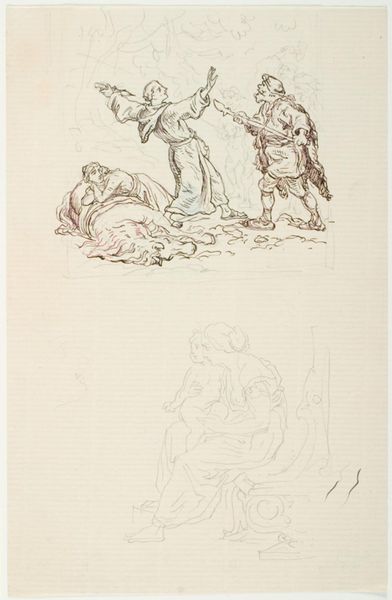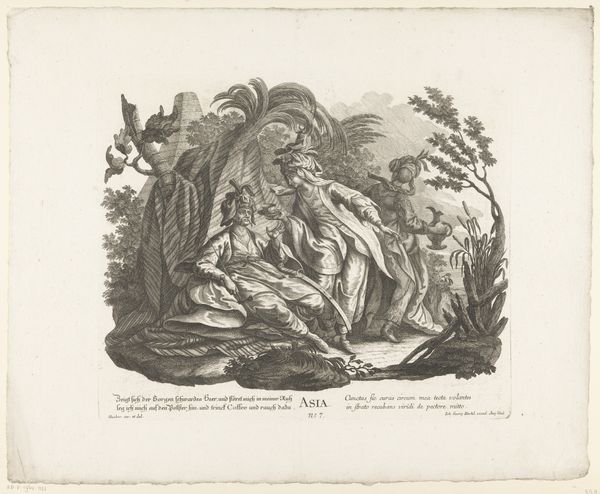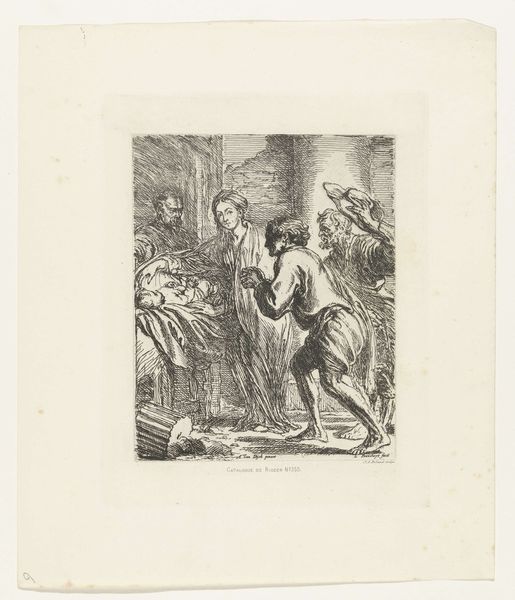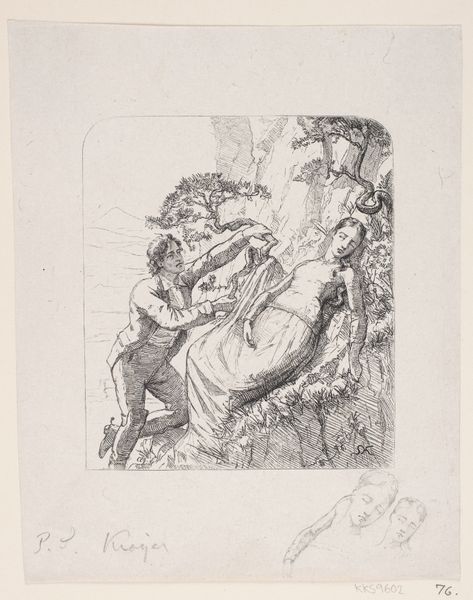
Tre illustrationsudkast til H.C. Andersen, "Dynd-Kongens Datter" 1869
0:00
0:00
drawing, pencil
#
drawing
#
narrative-art
#
figuration
#
pencil
#
watercolor
Dimensions: 181 mm (height) x 119 mm (width) (billedmaal)
Curator: Here we have three illustration drafts by Lorenz Frølich from 1869, created with pencil. The collection of drawings relates to Hans Christian Andersen’s “The Marsh King’s Daughter.” What’s your initial reaction to these fragmented narrative scenes? Editor: Well, the scenes evoke a sense of struggle, both personal and societal, rendered in these distinct registers. There’s a visible tension in the top drawing as the young woman confronts a toadlike figure with fire, while the bottom vignette feels very performative, like a heroic pose on horseback for some purpose. They strike me as more dynamic sketches, even raw and unfurnished, open to many narrative possibilities. Curator: Indeed. Note how Frølich utilizes contrasting values and precise hatching in the top and bottom panels, rendering an interplay of light and shadow that really defines forms, while the middle illustration appears quite unfinished, almost ghostly. The artist relies on lines to create contour and depth, adhering to academic drawing principles of the time. Semiotically, we can observe that the drawings reflect the structure of Andersen’s story, with the images showing sequential, discrete actions from the tale. Editor: I would emphasize that interpreting these scenes divorced from the full story seems exclusionary. These drawings reflect cultural biases present in Andersen's original story. The transformation narrative can be allegorical, engaging ideas of race, otherness, or colonialism by examining societal impositions of identity. Frølich mirrors the text through an almost theatrical approach, setting up characters as representations of virtue or monstrosity. Curator: You introduce a valuable interpretive layer! I hadn’t considered the societal implications of such dichotomous positions in this tale and how Frohlich highlights this division in his approach to each composition. Notice the deliberate and precise marks used to establish distinct features. Editor: And this focus is very telling, isn’t it? Frohlich is capturing more than just scenes. His technique mirrors Andersen’s values. We see the artist translating these societal tensions into the figures' poses and interactions—an exercise in solidifying what they represent through aesthetic expression. Curator: A most compelling interpretation—highlighting not only technical brilliance, but the conceptual underpinnings of this piece. Editor: Precisely; and looking at these pencil sketches, perhaps we gain as much understanding about ourselves and our values, as of the artwork itself.
Comments
No comments
Be the first to comment and join the conversation on the ultimate creative platform.
